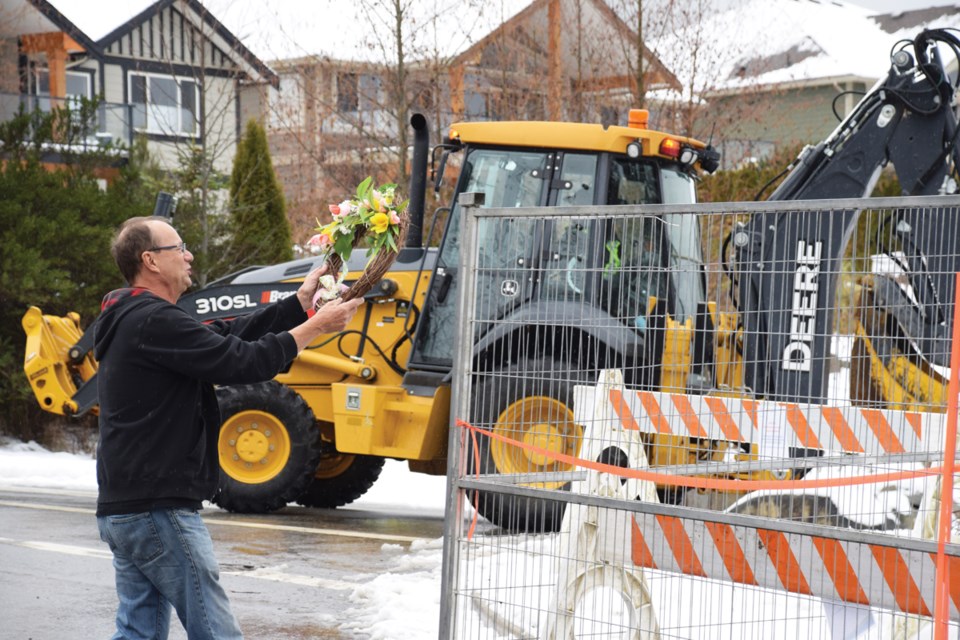Last week’s order to evacuate the Seawatch subdivision in Sechelt could prompt new legal action from displaced property owners.
Two property owners have already filed lawsuits and resident Greg Latham, who launched but then withdrew a similar lawsuit, said last Friday he and others are reconsidering their legal options.
Two other homeowners said they have now contacted legal counsel.
If the example of the lawsuits already underway is anything to go by, they could be lengthy and complicated cases.
The suit filed by Ross and Erin Storey, who had to abandon their home on Gale Avenue North in 2015, will go before a judge starting March 23, 2020.
The lawsuit names the District of Sechelt, developer Concordia Seawatch, several engineering firms, an insurance company, real estate agents and others.
Last November, several parties in the case filed final amendments to their statements of claim and responses in preparation for the case to move forward.
None of the claims in those documents has been proven in court.
The Storeys’ lawsuit acknowledges the couple learned about “historical runoff” and “historical sinkholes” in the subdivision when they were considering whether to make an offer to purchase their home in 2010.
But they argue Concordia, the realtors involved in the sale, and the engineering firm Geotactics misrepresented the situation with respect to the stability of the property, known as Lot 21, and that the District of Sechelt misrepresented the remediation work that had been done following the discovery of a sinkhole and spring in 2012.
The Storeys’ suit claims they relied, in part, on a report from Geotactics that concluded “the historical sinkholes on the property had been fully repaired and the likelihood of a future sinkhole occurring below the home was low to negligible” before deciding to purchase the home.
Geotactics was also the engineering firm used by Concordia in planning the Seawatch development.
In its response to the suit, Concordia said Geotactics found subsurface conditions “suitable to support residential structures” and found “no geotechnical fatal flaws on the property.”
Concordia also said, “Throughout the course of the excavation and construction of the development, the district conducted inspections, reviewed documentation and issued all necessary permits and approved the work.”
The District of Sechelt’s response also references Geotactics’ reports from 2004, 2005 and 2006 which it claims concluded that “while the occurrence of sinkholes in the general area was found to be more common than previously believed, it included assurances that the property was not subject to an unreasonable risk of sinkholes or other geotechnical hazards” and that “the probability of occurrence of geotechnical hazards is estimated to be less than 10 per cent in 50 years.”
However, as a condition of the development permit for Seawatch, a covenant was included that required any construction be done “in accordance with the recommendations” of Geotactics.
The district’s response also said because of that covenant, “no reliance could be placed on the district in respect of geotechnical matters for the subsequent safety of the buildings to be constructed on the property” and that position was “a matter of public record in the Land Title Office.”
According to the court filings from Concordia, “there was no known reason to doubt the content of the Geotactics Engineering Ltd. reports.”
For its part, Geotactics denies any misrepresentation of the situation at Seawatch, and said in its response “that all professional services provided by them in connection with the development … were performed in a proper and professional manner and in accordance with the professional standards of care, skill and diligence normally expected on a project of this nature at the time it was undertaken.”
Two other engineering firms named in the suit, Thurber and Golder Associates, say in their court filings that they were hired to investigate specific aspects of the geotechnical situation in the area not necessarily related to Lot 21, and that they too carried out the work in accordance with accepted professional standards.
Thurber contends, however, that it was not involved in “remediation work in respect of the spring and Seawatch Lane 2012 sinkhole” as claimed in the Storeys’ lawsuit, which also claims the district “had not implemented all of the remedial recommendations set out in the reports it had received from Thurber and Golder.”
Golder was retained to “develop a treatment solution” for that sinkhole and spring, and said in its response that the work was carried out following a plan submitted to and approved by the district “with periodic inspection provided by Golder personnel.”
The Storeys’ lawsuit also names Travelers, the insurance company that underwrote the new home warranty on the property.
The insurance company said it rejected two claims against the policy because any damage fell into the category of “acts of nature,” and that in investigating the claim it “did not identify any negligence.”



